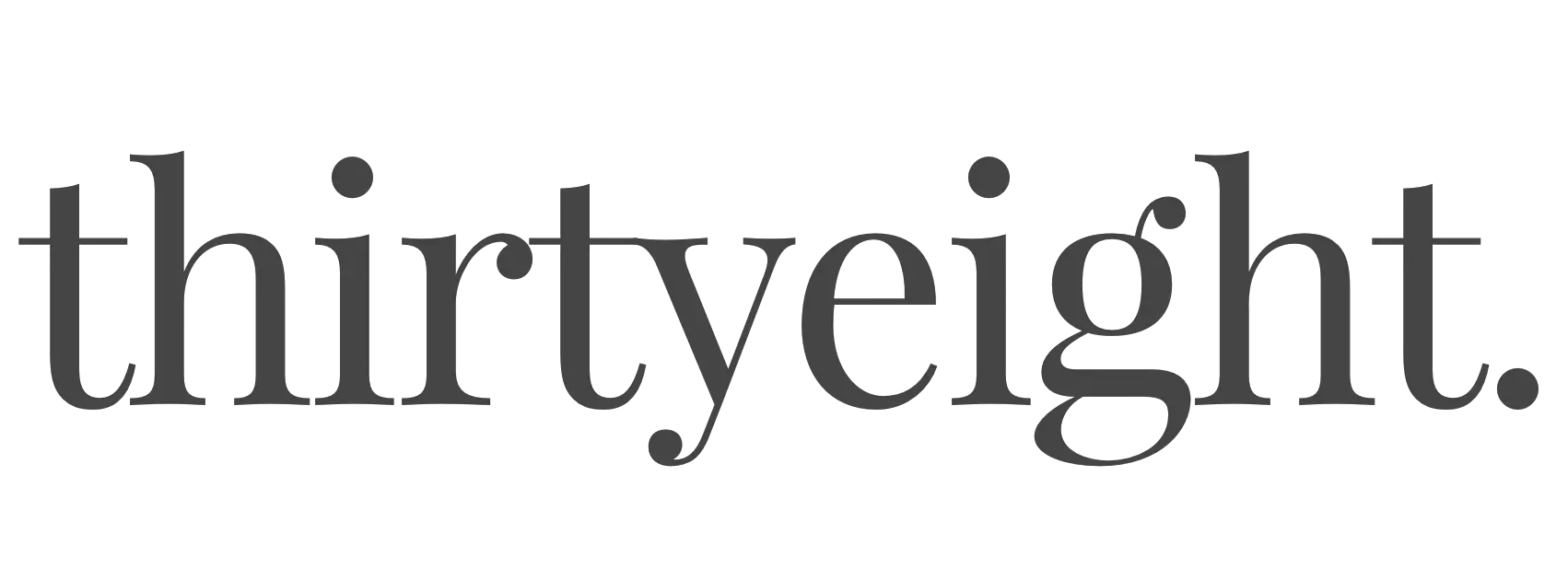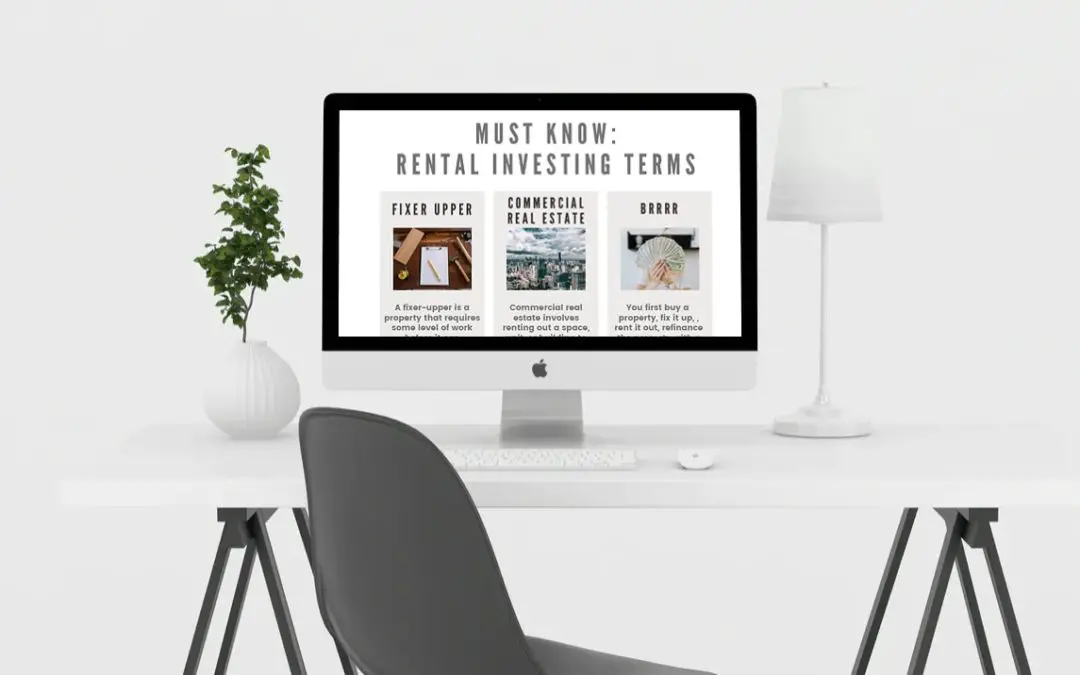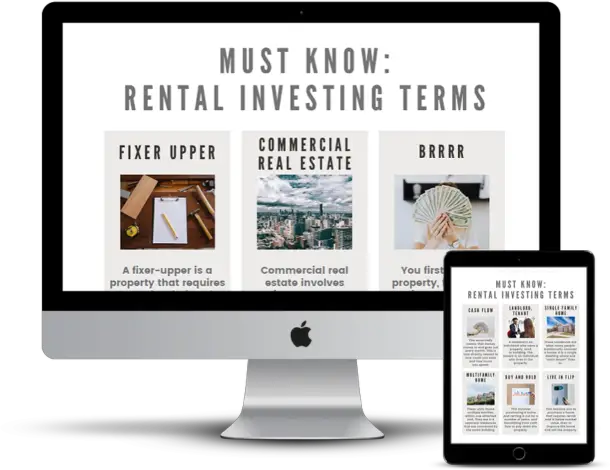15 Rental Investing Terms to Know
Rental investing can be very confusing for anyone who is brand new to this niche of investing. Therefore, this article is dedicated to helping you learn all the necessary basic rental investing terminology that you will encounter when learning about real estate investing!
These 15 rental investing terms are the most important for new investors to know:
- Cash flow
- Landlord and Tenant
- Single Family Home
- Multifamily Home
- Buy and Hold
- Live in Flip
- Fixer-Upper
- Commercial Real Estate
- BRRRR
- Turnkey
- House Hacking
- The MLS
- Accountability Partner
- Neighborhood Class
- Wholesaling
Be sure to scroll down to download your free printable that goes along with this article so you can always have these important definitions on hand!
Also note that I have a free rental investing course on this website and my YouTube channel to help you navigate through the process of learning about rental investing and growing wealth! Go check it out in the menu icon above!
FREE RENTAL INVESTING COURSE
Get free access to articles and videos and learn everything you need to grow wealth as a new rental investor!
Let’s dive into all the rental investing terms that every beginner should know:
1. Cash Flow
The concept of cash flow planning is the foundation of budgeting and investing.
This essentially means that money comes in and goes out every month. This is also directly related to how much you save and how much you spend.
Cash flow how much cash you have left over at the end of the month. Since there is always “cash flowing”, this is either a positive or a negative number.
Ideally, this is a positive number!
2. Landlord and Tenant
A landlord is an individual who owns a property, land, or building.
The tenant is an individual who lives in the property (ex. living in a unit of an apartment) and pays the landlord to reside in the landlord’s property.
For example, if you own a house and rent out a bedroom to a friend, you would be the landlord, and your friend would be the tenant.
3. Single Family Home
A single family home, commonly abbreviated as “SFH”, is a property where only one family resides in.
These residences are what many people traditionally consider a house. It is a single dwelling where one “main tenant” lives in.
4. Multifamily Homes
A multifamily home has 2 to 4 units, commonly known as duplexes, triplexes, and quadplexes.
As the name suggests, these units house multiple families, all within one attached unit. They are essentially 2-4 separate residences that are connected by the same building.
5. Buy and Hold
The buy-and-hold method of rental investing is the most common way to invest in real estate.
Buy-and-hold real estate involves purchasing a property and renting it out for a number of years, and benefitting from cash flow from the rent to pay down the property.
6. Live in Flip
The live-in-flip method essentially requires you to purchase a home that requires some rehabilitation and is below market value, then to improve the home (flooring, paint, add a bedroom, etc.), then sell the property.
This is a popular method of rental investing because you can avoid paying capital gains taxes on the sale of the property, but you need to have lived in the home for 2 of the previous 5 years.
7. Fixer-Upper
A fixer-upper is a property that requires some level of work before it can realistically (or, safely) be rented out.
The amount of rehab needed to be done on a property varies significantly, with some homes requiring new electrical, to other homes that just need a new paint job.
8. Commercial Real Estate
Commercial real estate involves renting out a space, unit, or building to businesses, rather than families for living.
This can include anything from yoga studios, to doctor offices, to donut shops. Investing in commercial real estate typically costs much more, due to needing a higher down payment, and due to the buildings costing much more than a traditional single family home.
9. BRRRR
The term “BRRRR” stands for: Buy, Rehab, Rent, Refinance, Repeat.
The key to this rental investing method is that all you need is your initial investment! You first buy a good cash-flowing property, fix it up (see: fixer-upper), rent it out, refinance the property with a low interest mortgage, and repeat the process.
During the refinance process you get your money back, in order to have cash to invest in your next property!
10. Turnkey
Turnkey investing involves purchasing a rental property from a company who can find a property, rehab it, and can have it managed by someone else.
You usually can then rent the property out right away, without needing to put extra time and money into fixing it up. Each turnkey company does this process differently, with some requiring you to do more or less effort to get to the point of renting. As in, one company may simply find you properties, while other will get it rent-ready.
11. House Hacking
Using house hacking is the easiest way to begin rental property investing!
The basic definition of house hacking is when your primary residence becomes your investment.
How’s hacking can be done in multiple ways. Below are a few examples:
- Buying a small multifamily property of two to four units in living in one of the units
- Renting out a room in your home
- Purchasing a home with a “mother-in-law suite” and renting out one or both of the units
The reason that house hacking is so popular is because it can significantly decrease your living expenses! Your tenants can essentially pay for your mortgage, allowing you to live for free.
12. The MLS
The MLS stands for “Multiple Listing Service”.
This is essentially the master list of all the homes and properties that are listed by real estate agents. It is the collection of all the listing services, combined.
The MLS is only accessible to real estate agents. Many real estate agents get their license to have access to this ultimate list of active properties! Having the opportunity to use the MLS gives an agents the first access to all homes that are for sale.
Go learn about why I recommend being a real estate agent as an investor!
13. Accountability Partner
An accountability partner is someone who will keep you on track!
When you start anything new, it can be difficult to stick with it! This is especially true when it comes to new habits. You are likely to quit a new habit within the first three months!
An accountability partner can be a close friend, relative, or even your spouse. This person is someone who you can check in with on a regular basis (once a month is sufficient) and this person is someone who can motivate you and help you through the process of staying on track with your goals. If you do not already have an accountability partner, I highly recommend you find someone who can check in with as a rental investor!
14. Neighborhood Class
Neighborhoods are rated on a scale from A to D, and sometimes from A to C, or A to F.
A would be considered top-notch, while D (C, or F, depending on the rating scale) would be the worst condition. Properties can also be considered on the rating scale as well, essentially stating that a home itself can be in a great condition, or in a horrid condition.
Class A locations involve the newest and best. This may be areas of the best schools or high-end retail, for example. They are also more expensive, resulting in less cash flow on your end, if you consider investing in one of these properties. You may consider these areas “upper-middle to upper class”.
Class B locations are considered to be “good” areas, but are not brand new. They typically are safe locations that have amenities and decent schools. You may consider these areas “middle class”.
Class C locations are older neighborhoods. You may consider these areas neighborhoods that are more blue-collar or with workers that have low-wage jobs. Rents are low and homes may require a lot of renovation.
Class D locations are areas that may be considered very dangerous, run-down, or neglected. There typically is crime in the area and many rental investing gurus warn newbie investors to stay clear of these areas due to safety and the significant difficulty of finding and keeping good tenants.
15. Wholesaling
Wholesaling is a form of investing using real estate, and is very different than other methods listed above.
Real estate wholesaling consists of finding a property at discount then selling the contract to the property to another individual. The person who would be buying the contract would likely be a rental investor looking to flip or rent out the property.
Real Estate Terms Printable
Use this printable to quickly remember all of the terms listed in this article!
Summary
There are many unique and new terms that are within the real estate investing niche! These terms are commonly used and important for the new real estate investor to learn, in order to better understand advice in podcasts, and what you learn in videos and books.


